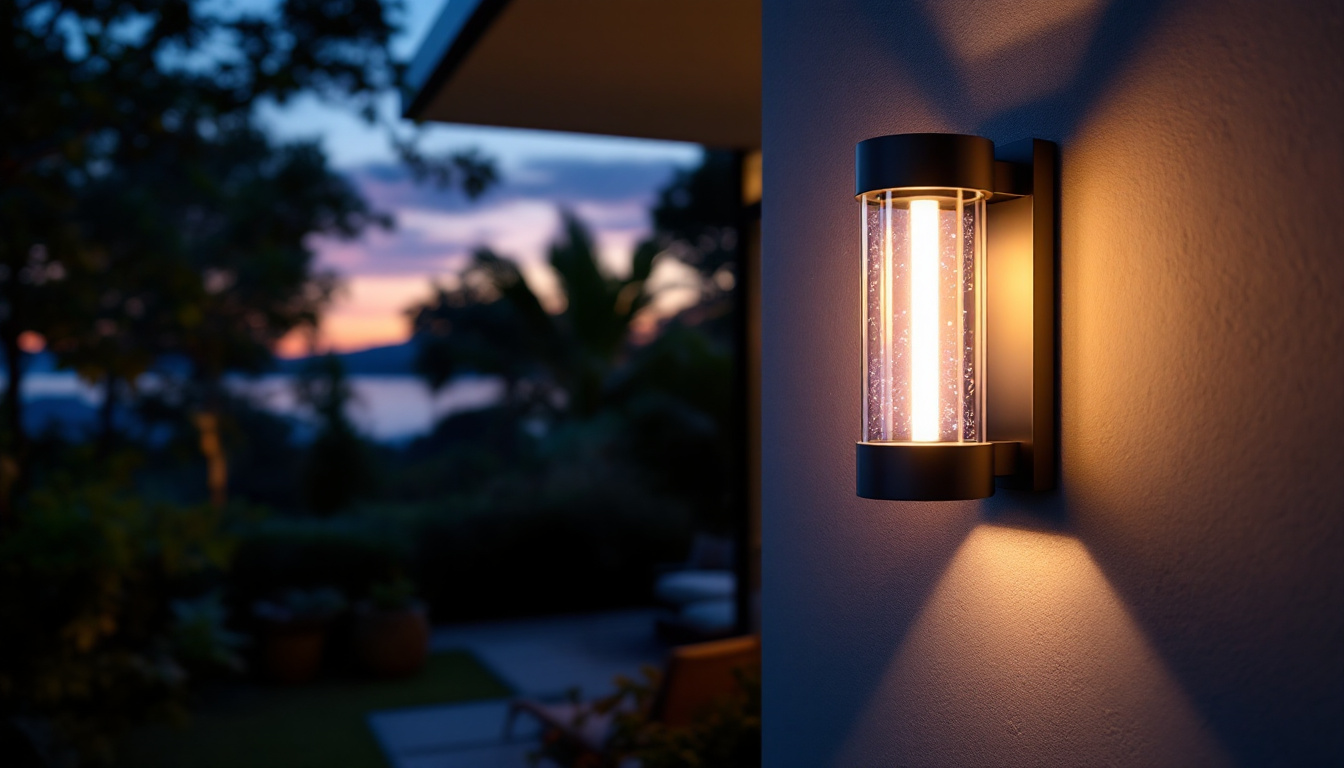
In the ever-evolving world of electrical lighting, lighting contractors face the dual challenge of meeting client expectations while ensuring profitability. With the right strategies and insights, contractors can enhance their lighting installations, streamline operations, and ultimately maximize returns. This article delves into effective methods to achieve these goals, providing a comprehensive guide for lighting contractors.
Efficient lighting design is crucial not only for aesthetics but also for energy savings and operational efficiency. A well-designed lighting system can significantly reduce energy consumption, which translates to lower utility costs for clients. This understanding is essential for contractors aiming to provide value while maintaining profitability.
As sustainability becomes a priority for many businesses, the demand for energy-efficient lighting solutions has surged. Utilizing LED technology, for instance, can reduce energy consumption by up to 75% compared to traditional incandescent bulbs. By promoting these benefits to clients, contractors can position themselves as leaders in the sustainable lighting market.
Moreover, incorporating smart lighting systems that adjust based on occupancy and natural light levels can further enhance energy efficiency. These systems not only contribute to sustainability but also provide clients with long-term savings, making them more appealing. The integration of sensors and automated controls allows for a dynamic lighting experience, adapting to the needs of the space and its occupants, which can be particularly beneficial in commercial environments where energy usage can be substantial.
Understanding the specific needs and preferences of clients is vital in creating a successful lighting design. Engaging clients in the design process ensures that their vision is realized while also allowing contractors to showcase their expertise. This collaborative approach can lead to increased client satisfaction and repeat business.
Utilizing advanced design software can aid in visualizing the final outcome, allowing clients to see how different lighting options will affect their space. This not only enhances communication but also builds trust, as clients feel more involved in the decision-making process. Furthermore, providing clients with a range of customizable options can empower them to make informed choices that align with their brand identity or personal style. For instance, the use of color temperature adjustments can create different moods and atmospheres, catering to various activities within a space, from energetic work environments to calming relaxation areas.
Efficiency in installation processes can significantly impact profitability. By optimizing workflows and minimizing downtime, contractors can complete projects more swiftly and take on additional jobs. Here are some strategies to consider.
A thorough pre-installation plan can save time and resources. This includes site assessments, understanding client requirements, and preparing a detailed project timeline. By anticipating potential challenges, contractors can mitigate risks and avoid costly delays.
Additionally, ensuring that all materials and tools are on-site before the installation begins can streamline the process. This proactive approach minimizes interruptions and keeps the project on schedule, enhancing overall efficiency. It is also beneficial to conduct a pre-installation meeting with the team to discuss roles, responsibilities, and safety protocols. This fosters a collaborative environment and ensures that everyone is aligned with the project goals, ultimately leading to a smoother installation process.
Incorporating technology into the installation process can lead to significant time savings. For instance, using project management software can help track progress, manage schedules, and communicate with team members effectively. This ensures that everyone is on the same page and can address any issues promptly.
Moreover, employing tools such as laser measuring devices can improve accuracy during installations, reducing the likelihood of errors that could lead to costly rework. Embracing technology not only enhances efficiency but also positions contractors as innovative leaders in the industry. Additionally, utilizing mobile applications for real-time updates allows teams to share information instantly, facilitating quick decision-making and adjustments as needed. This level of connectivity ensures that all members can respond swiftly to changes, further streamlining the installation process and enhancing productivity.
Cost management is a critical aspect of maximizing profitability in lighting installations. By carefully analyzing expenses and implementing effective budgeting strategies, contractors can improve their bottom line. This involves not only tracking current expenditures but also forecasting future costs based on market trends and project demands. A comprehensive understanding of financial metrics can empower contractors to make informed decisions that drive efficiency and enhance overall project outcomes.
Accurate project estimation is essential for ensuring profitability. Contractors should develop a systematic approach to estimating costs, taking into account materials, labor, overhead, and any unexpected expenses. Utilizing estimation software can aid in creating precise quotes, reducing the risk of underbidding and subsequent losses. Furthermore, incorporating historical data into estimation practices allows contractors to identify patterns and variances that can affect project budgets, leading to more informed predictions.
Moreover, regularly reviewing and updating estimation methods based on past projects can lead to improved accuracy over time. Learning from previous experiences allows contractors to refine their processes and better anticipate costs in future installations. Engaging in post-project evaluations can provide valuable insights into what worked well and what didn’t, fostering a culture of continuous improvement within the organization.
Building strong relationships with suppliers can lead to better pricing and terms. Contractors should not hesitate to negotiate for bulk discounts or favorable payment terms, which can significantly reduce material costs. Establishing long-term partnerships with reliable suppliers can also ensure consistent quality and availability of materials. Additionally, maintaining open lines of communication with suppliers can facilitate quicker responses to any issues that may arise, further enhancing the efficiency of the supply chain.
Additionally, exploring alternative suppliers and materials can provide cost-saving opportunities without compromising quality. By being proactive in sourcing, contractors can enhance their competitive edge while maintaining profitability. This might involve researching emerging technologies or sustainable materials that not only reduce costs but also appeal to environmentally conscious clients. The ability to adapt and innovate in sourcing strategies can position contractors as leaders in the industry, attracting a broader client base and fostering loyalty among existing customers.
Effective marketing is essential for attracting new clients and retaining existing ones. By implementing targeted marketing strategies, lighting contractors can enhance their visibility and grow their business.
In today’s digital age, having a robust online presence is crucial. Contractors should invest in a professional website that showcases their portfolio, client testimonials, and services offered. A well-designed website can serve as a powerful marketing tool, attracting potential clients and establishing credibility.
Furthermore, leveraging social media platforms can enhance engagement with clients and showcase completed projects. Regularly posting updates, tips, and industry news can position contractors as knowledgeable experts in the field, fostering trust and encouraging referrals.
Networking within the industry can lead to valuable partnerships and referrals. Attending industry events, trade shows, and local business gatherings can help contractors connect with potential clients and collaborators. Building relationships with architects, interior designers, and builders can lead to mutually beneficial partnerships that drive business growth.
Additionally, participating in community events and initiatives can enhance a contractor’s reputation and visibility. By being active in the community, contractors can establish themselves as trusted professionals, leading to increased client inquiries and project opportunities.
Investing in staff training and development is vital for maintaining a competitive edge in the lighting industry. Well-trained employees can enhance the quality of installations and improve overall customer satisfaction.
Encouraging team members to pursue continuous education and certification can lead to improved skills and knowledge. This not only enhances the quality of work but also demonstrates a commitment to professionalism and excellence. Many organizations offer training programs and certifications that can benefit lighting contractors and their staff.
Moreover, staying updated on the latest trends and technologies in the lighting industry can help contractors remain competitive. Regular training sessions and workshops can ensure that employees are well-versed in new products and installation techniques, leading to more efficient and effective service delivery.
A positive work environment can significantly impact employee morale and productivity. Contractors should prioritize creating a supportive atmosphere that encourages collaboration and open communication. Recognizing and rewarding employee achievements can boost motivation and foster loyalty, leading to lower turnover rates.
Additionally, providing opportunities for team-building activities can strengthen relationships among staff members, enhancing overall teamwork and efficiency. A cohesive team is more likely to deliver high-quality work and contribute to the success of the business.
In a dynamic industry like lighting, it is essential for contractors to regularly evaluate their business strategies. Adapting to changing market conditions and client preferences can lead to sustained profitability and growth.
Regular market research can provide valuable insights into industry trends, client preferences, and competitor strategies. By understanding the market landscape, contractors can identify opportunities for growth and adjust their services accordingly.
Surveys and feedback from clients can also provide insights into areas for improvement. By actively seeking client input, contractors can enhance their offerings and ensure they are meeting the needs of their target audience.
Establishing clear business goals is crucial for guiding growth and profitability. Contractors should set specific, measurable, achievable, relevant, and time-bound (SMART) goals to ensure clarity and focus. Regularly reviewing these goals can help identify areas of success and those that require adjustment.
By being adaptable and willing to pivot strategies based on performance and market conditions, contractors can position themselves for long-term success. A proactive approach to business management can lead to sustained profitability and a strong reputation in the lighting industry.
Maximizing profitability in lighting installations requires a multifaceted approach that encompasses efficient design, streamlined processes, effective cost management, and robust marketing strategies. By focusing on these key areas, lighting contractors can enhance their service offerings, improve client satisfaction, and ultimately drive profitability.
As the lighting industry continues to evolve, staying informed and adaptable will be essential for success. By investing in training, technology, and relationships, contractors can position themselves as leaders in the field, ready to meet the challenges and opportunities that lie ahead.
Ready to elevate your lighting installations and maximize profitability? At LumenWholesale, we provide you with the highest quality, spec-grade lighting products at unbeatable wholesale prices. Say goodbye to local distributor markups and hello to superior lighting solutions that meet the strictest industry standards. With our hassle-free bulk buying and free shipping, you can ensure every project shines with excellence without breaking the bank. Don’t compromise on quality or cost. Discover the best value in wholesale lighting today and light up your business with LumenWholesale.

Discover how Edison bulb solar lights are revolutionizing the lighting industry for contractors.

Discover how LED conversion kits for recessed lighting can enhance profitability in lighting installations.

Discover how receptacles can transform the workflow of lighting contractors by enhancing efficiency and safety.

Discover why outdoor LED wall lanterns are a must-have for every lighting contractor.